Overview
Preparing to leave a stable job for entrepreneurship requires careful financial planning, networking, and a solid business strategy. The article emphasizes the importance of establishing a financial safety net, building professional connections, and crafting a comprehensive business plan to ensure a successful transition into entrepreneurship, highlighting that these steps are essential for navigating the uncertainties of starting a new venture.
Introduction
Transitioning into entrepreneurship is a bold and transformative step, often fueled by a desire for independence and the pursuit of personal passions. However, the path to becoming a successful entrepreneur is not without its challenges, requiring careful planning and strategic decision-making. From establishing a solid financial foundation to building a robust professional network, every aspect of this journey plays a crucial role in shaping future success.
Understanding the intricacies of:
- Crafting a compelling business plan
- Embracing a growth mindset
- Timing the transition
can empower aspiring entrepreneurs to navigate uncertainties with confidence. This article delves into essential strategies and insights that can help individuals effectively prepare for and thrive in their entrepreneurial endeavors, ensuring they are equipped to turn their visions into reality.
Financial Foundations: Preparing Your Finances for Entrepreneurship
Embarking on the journey of entrepreneurship requires a thorough assessment of your monetary landscape, and it is essential to consider tips for preparing to leave a stable job for entrepreneurship. Begin by crafting a detailed budget that captures your current expenses and anticipates the costs of launching your new venture. Strive to set aside a minimum of six months’ worth of living costs; this safety net offers peace of mind, enabling you to concentrate on your endeavors without the immediate weight of economic pressure.
Collaborating with an advisor is especially advantageous; their knowledge can clarify different funding alternatives, including:
- Self-funding through checking and savings accounts, where you can allocate resources specifically for your needs
- Loans
- Possible angel investors from your personal connections
Current trends reveal that over one-third of U.S. entrepreneurs feel confident about the political climate for launching new ventures, indicating a fertile environment for aspiring owners. Additionally, about 40% of traditionally employed Americans are considering entrepreneurship, highlighting a growing interest in self-employment, particularly among those under 35 and the highly educated.
Moreover, 90% of business owners affirm that their accountant or bookkeeper plays a crucial role in fostering business growth, underscoring the importance of leveraging professional monetary advice. For further guidance, consider referring to ‘Your Career 2.0: A Survival Guide for The Battered Career Syndrome and Investor Syndrome,’ which provides valuable insights for navigating your career transition. By taking these proactive steps and following tips for preparing to leave a stable job for entrepreneurship, you can navigate financial uncertainties and lay a solid foundation for your entrepreneurial aspirations while embracing the personal agency that comes with this significant career transition.
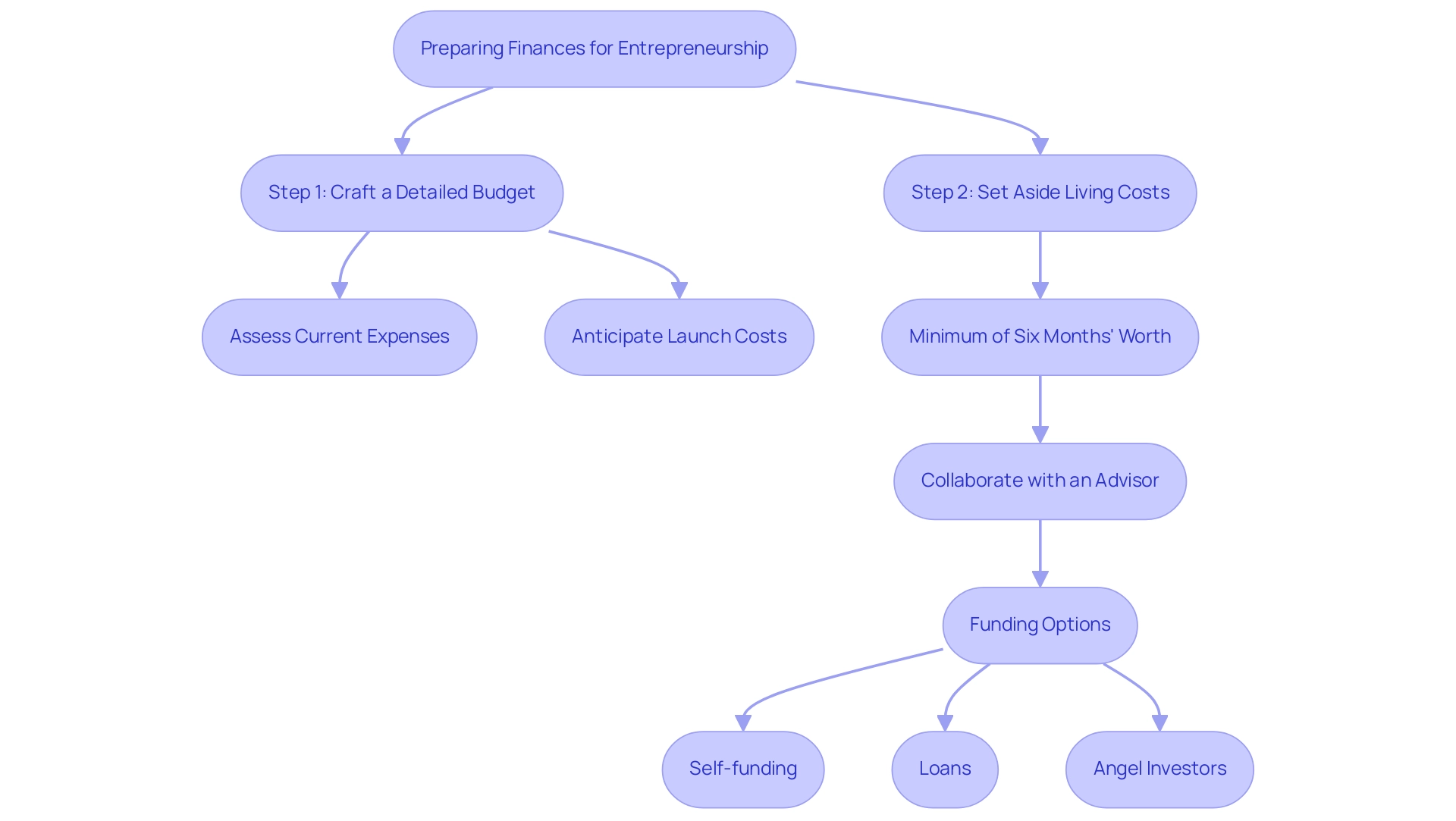
Building Your Network: The Key to Entrepreneurial Success
When seeking success as an entrepreneur, it is essential to consider tips for preparing to leave a stable job for entrepreneurship, including establishing a strong professional network. Start by rekindling connections with former colleagues, mentors, and industry contacts. Actively engage in networking events, workshops, and conferences that align with your professional interests.
Leveraging social media platforms like LinkedIn can also significantly enhance your outreach—engage with professionals within your industry to foster meaningful relationships. Joining industry-specific groups or associations further broadens your network. Notably, recent statistics reveal that 71% of small and medium-sized enterprises (SMEs) secured opportunities through face-to-face networking at trade shows, underscoring the effectiveness of personal interactions.
Additionally, with more than a third (38.8%) of organizers holding satellite events alongside major B2B conferences, the networking landscape is evolving, providing more opportunities for connection. As Geoffrey Nicholson, a TechStars All-Star mentor, emphasizes, ‘Learn effective networking techniques from a top mentor.’ Remember, the connections you nurture today can offer invaluable support, guidance, and opportunities for collaboration as you follow tips for preparing to leave a stable job for entrepreneurship.
Furthermore, a positive job application experience can significantly enhance your professional reputation; 56% of workers would share such an experience, highlighting the broader impact of networking.
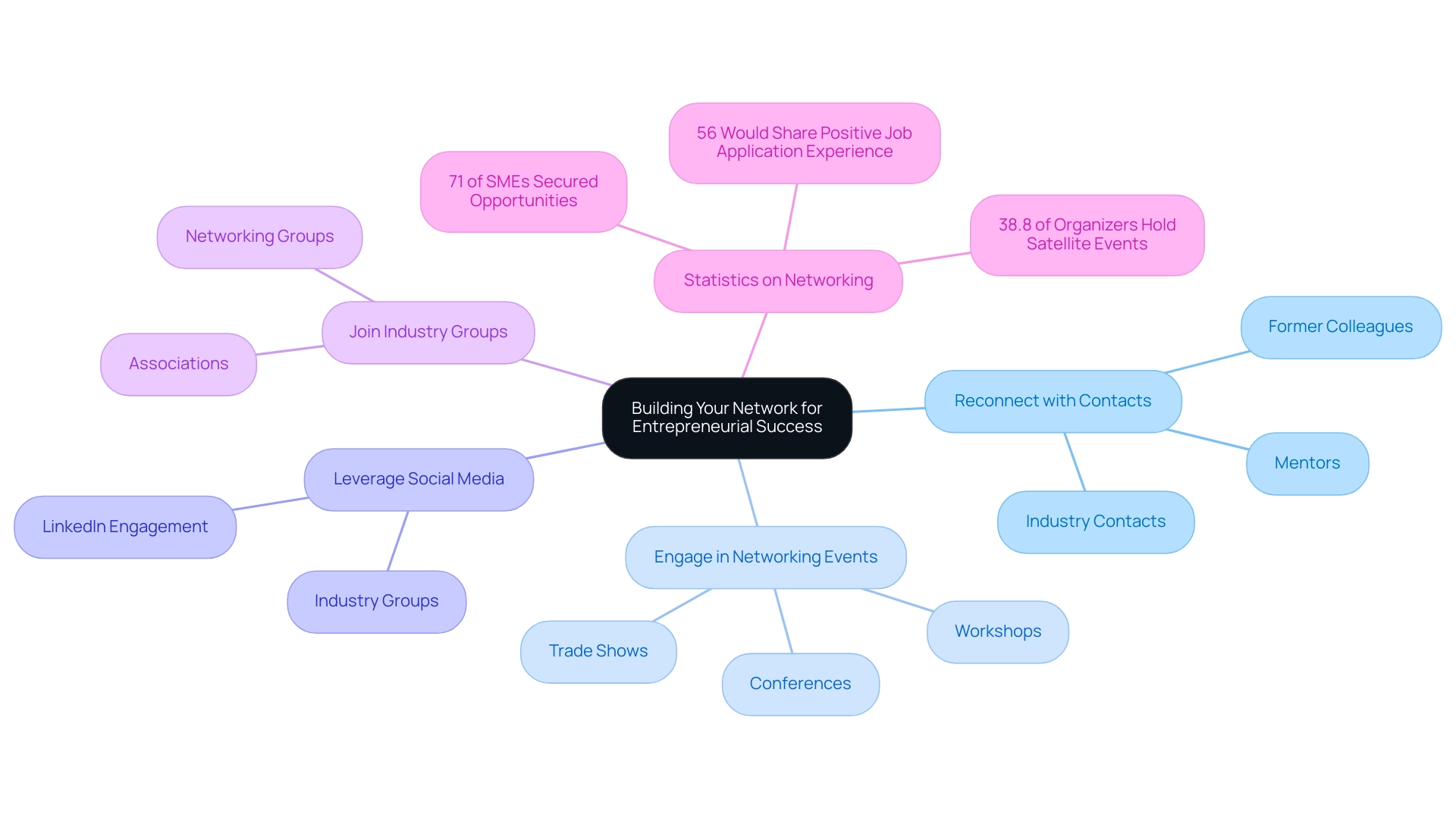
Crafting a Business Plan: Your Roadmap to Success
One of the essential tips for preparing to leave a stable job for entrepreneurship is to create a comprehensive plan, as it serves as the bedrock upon which your new venture can flourish. As tips for preparing to leave a stable job for entrepreneurship, begin by:
- Articulating your enterprise idea
- Identifying your target market
- Establishing your unique selling proposition (USP)
Detailing your marketing strategy, operational framework, and financial projections are important tips for preparing to leave a stable job for entrepreneurship.
A well-crafted plan is among the crucial tips for preparing to leave a stable job for entrepreneurship, as it not only clarifies your vision but also serves as a vital tool in securing funding from investors or lenders. In fact, statistics show that ten out of every hundred enterprises without plans are dead by five years, underscoring the critical importance of having a plan. Startups that follow tips for preparing to leave a stable job for entrepreneurship and have a solid plan are far more likely to succeed, with higher rates of investor attraction.
Regularly revisiting and refining your plan will provide you with essential tips for preparing to leave a stable job for entrepreneurship, helping you stay in tune with your goals and allowing for necessary adjustments as your landscape evolves. Remember, as mentioned by Latonia Cokely from Adjourn Teahouse, the right resources and planning can enable significant development. Her experience of moving into a larger space with the help of strategic planning and support exemplifies how effective planning can lead to success.
Moreover, small businesses significantly enhance both local and global economies by creating jobs, driving innovation, and diversifying economic activities, highlighting the importance of a strong business plan in contributing to this advancement.
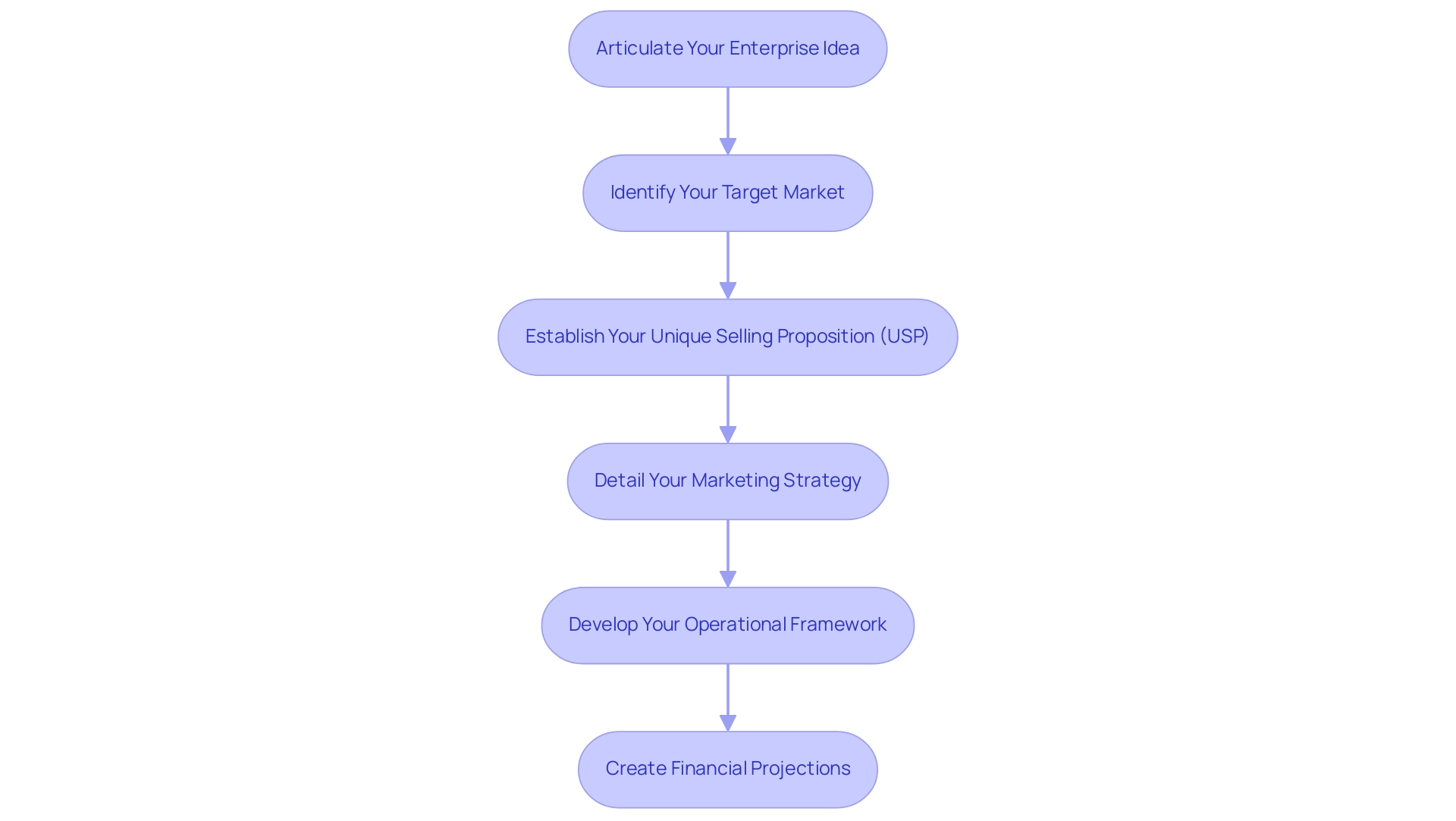
Mindset Shift: Embracing the Entrepreneurial Journey
Embarking on the entrepreneurial journey demands a significant shift in mindset. Moving away from the security of a stable job into the unpredictable realm of entrepreneurship can appear intimidating, so it’s important to consider tips for preparing to leave a stable job for entrepreneurship. However, embracing a developmental mindset is fundamental; it allows you to perceive challenges not as obstacles but as valuable learning opportunities.
As we look towards 2024, it’s noteworthy that female entrepreneurs are projected to increase by 10%, comprising 40% of all entrepreneurs globally, reflecting a dynamic shift in the entrepreneurial landscape. This shift underscores the importance of resilience and adaptability—traits that will empower you as you navigate this new path. Furthermore, advancements in technology and artificial intelligence are expected to shape entrepreneurial innovation, providing new opportunities for those willing to adapt; therefore, some essential tips for preparing to leave a stable job for entrepreneurship include:
- Surrounding yourself with positive influences, such as mentors who have traversed this journey, which can provide invaluable support and guidance.
- Participating in customized coaching, designed for your unique objectives and obstacles, can provide valuable tips for preparing to leave a stable job for entrepreneurship, further illuminating your entrepreneurial ambitions and helping you manage your compensation expectations as you encounter gradual financial advancement associated with your business.
- In a collaborative coaching environment, you can share experiences and insights with peers, enhancing your learning and development.
- Additionally, consider attending the International Business Ownership Expo in New York City from May 30th to June 1st, 2024. This premier event connects aspiring entrepreneurs with over 300 franchise brands and industry experts, offering resources and educational seminars tailored to your journey.
Research shows that while 96% of individuals who fail to achieve success cite a lack of effort, only 4% attribute it to a lack of ability. Thus, embracing change with an open mind and a commitment to perseverance will be your greatest assets in fostering entrepreneurial success. Remember to leverage educational resources and supportive coaching to overcome doubt and build confidence in your capabilities.
Additionally, leaders should model the growth mindset they wish to see in their organizations, further reinforcing the importance of this mindset shift.
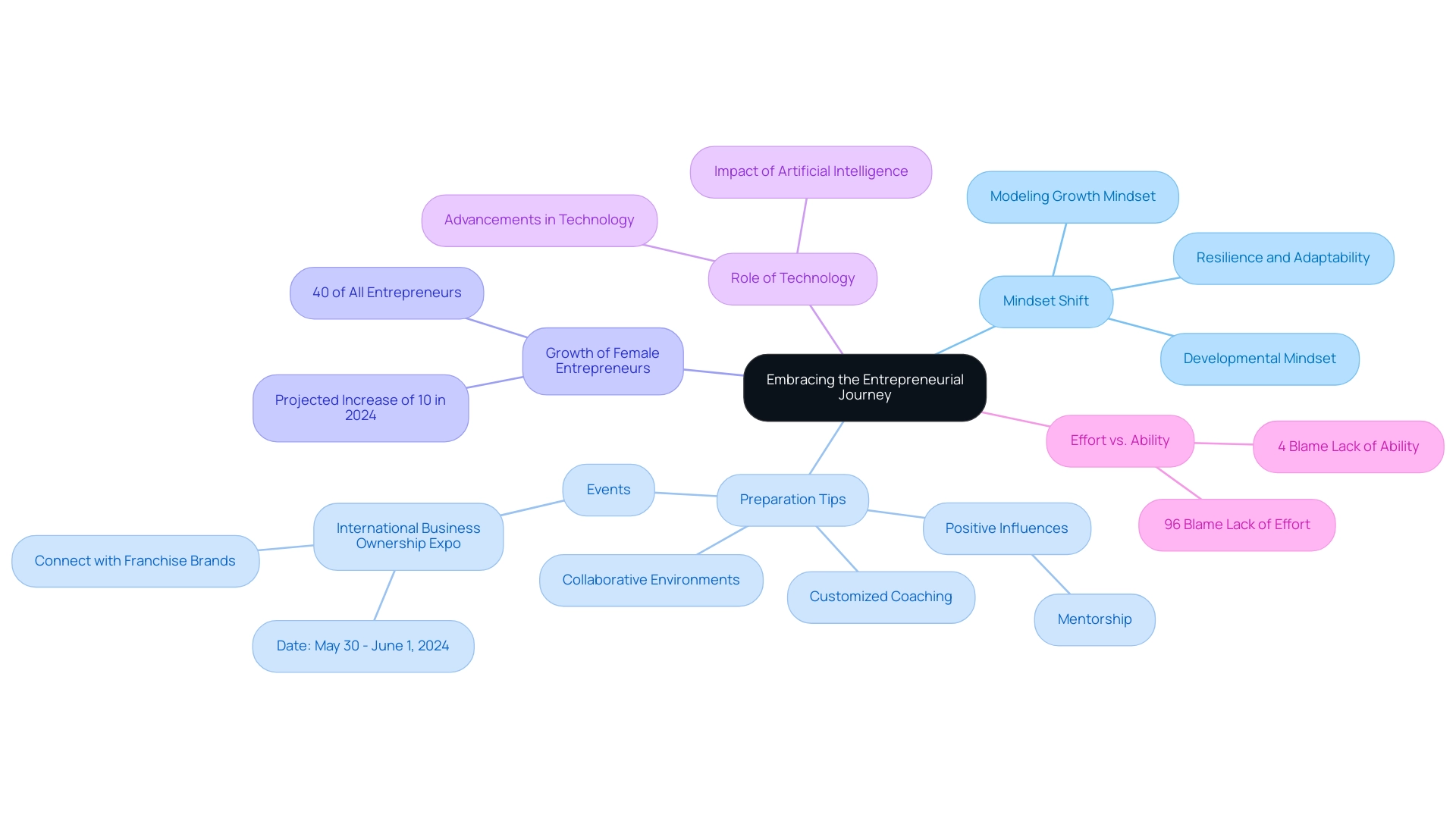
Timing Your Transition: When to Leave Your Job for Entrepreneurship
Timing your transition to entrepreneurship is a pivotal factor that can significantly influence your chances of success. Before making the leap, it’s essential to thoroughly evaluate your current job situation, financial stability, and prevailing market conditions by following tips for preparing to leave a stable job for entrepreneurship. A solid business plan is crucial; consider leaving your job when you have one in place and have cultivated a robust network to support your venture, using tips for preparing to leave a stable job for entrepreneurship.
As you contemplate this transition, take into account any personal commitments—such as family responsibilities—that may impact your decision. In today’s shifting job market, approximately 15 million entrepreneurs are currently navigating this path in the U.S., with projections suggesting that 27 million Americans will embrace full-time self-employment soon. This movement reflects a significant trend towards economic independence and personal agency, which is particularly relevant for those experiencing the Battered Career Syndrome and Investor Syndrome.
Moreover, with 20% of all U.S. enterprises owned by individuals of color, the entrepreneurial landscape is becoming increasingly diverse. However, potential small enterprise owners should also be aware that the median company has less than one month of cash available, underscoring the financial pressures that can accompany this transition. Notably, one-third of U.S. entrepreneurs express confidence in the current political climate for entrepreneurship, highlighting a favorable environment for new business ventures.
By taking the time to assess these factors, you will uncover valuable tips for preparing to leave a stable job for entrepreneurship, enabling you to make a well-informed decision that aligns with your long-term goals and aspirations, ultimately leading to empowerment and growth in your career. To further assist you in this journey, download your free veteran entrepreneur® Program presentation here.
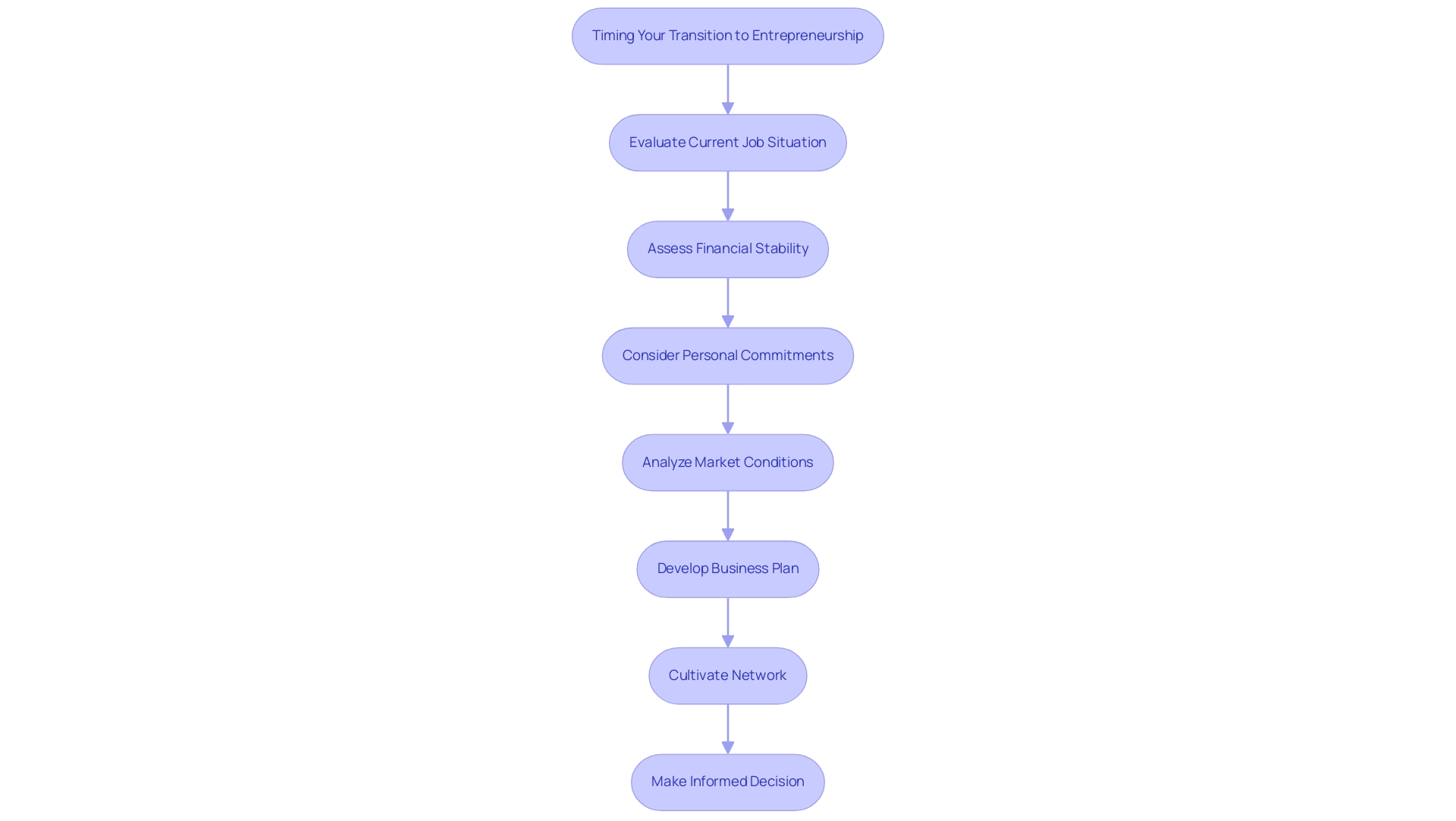
Conclusion
Embarking on the entrepreneurial journey demands careful preparation and strategic planning to navigate its challenges effectively. A solid financial foundation is essential; creating a detailed budget, saving adequately, and consulting with financial advisors can alleviate immediate stress and provide a sense of security.
Building a strong professional network is equally crucial. Reconnecting with former colleagues, attending industry events, and leveraging social media can foster valuable connections, leading to collaboration and support. Personal interactions are often key to uncovering business opportunities.
A well-structured business plan serves as the backbone of any venture, clarifying the business vision, facilitating funding, and helping to navigate market changes. Regularly revisiting and refining this plan ensures alignment with goals and adaptability.
Additionally, embracing a growth mindset is vital for overcoming uncertainties. Viewing challenges as learning opportunities fosters resilience and adaptability—qualities essential for success. Timing the transition from a stable job to entrepreneurship is a critical decision that requires careful consideration of personal circumstances and market conditions.
In conclusion, the path to entrepreneurship involves cultivating the right mindset, building a supportive network, and establishing a strong financial and strategic foundation. With thoughtful preparation and a proactive approach, aspiring entrepreneurs can transform their visions into reality and thrive in a dynamic business landscape, ultimately achieving personal fulfillment and agency in their entrepreneurial pursuits.


